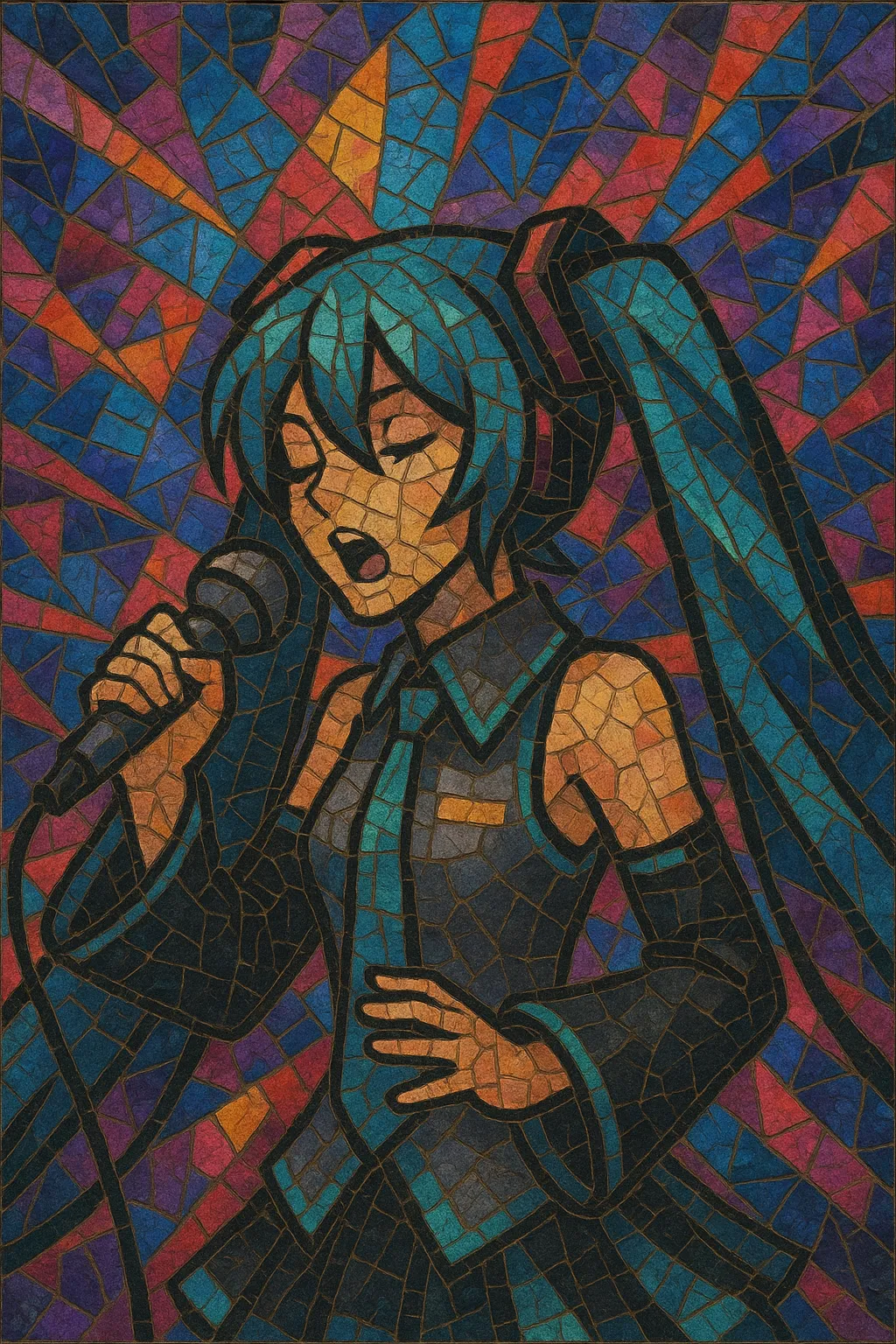Vocaloid is a music genre and production culture centered on songs performed by synthesized singing voices, most famously the virtual singer Hatsune Miku. Producers compose and arrange tracks, then program lyrics and melodies into voicebanks to create lead vocals that sound like human singers.
While the repertoire spans many styles, Vocaloid is strongly associated with Japanese pop, rock, and electronic dance music aesthetics. Songs are often released online with striking illustrated artwork and animated "PV" videos, and they are disseminated through platforms such as Nico Nico Douga and YouTube by independent creators and labels.
The genre’s hallmark is the combination of catchy, hyper-bright melodies, energetic rhythm sections, and expressive vocal programming (tuning) that leverages timbral artifacts unique to synthesized voices. A vibrant fan community drives remixes, covers, live concerts with virtual avatars, and continual evolution of stylistic norms.
Yamaha launched the Vocaloid singing synthesis engine in the early 2000s, first with English voicebanks (LEON, LOLA, and MIRIAM). The technology allowed users to input lyrics and melodies to generate sung vocals from sampled phonemes.
The watershed moment arrived in 2007 when Crypton Future Media released Hatsune Miku for the VOCALOID2 engine. Her character design, Japanese voicebank, and creator-friendly licensing triggered a surge of user-generated songs and videos on Nico Nico Douga. Producers (often called “-P”) such as kz (livetune), ryo (supercell), and wowaka helped define the sound—bright, melodic J-pop/EDM and rock with highly tuned synthetic vocals.
Subsequent voicebanks (Kagamine Rin/Len, Megurine Luka, GUMI, IA, and more) and engine upgrades (VOCALOID3/4/5) broadened timbral palettes. Vocaloid concerts featuring 3D projections and full bands popularized the phenomenon beyond online communities. Parallel ecosystems (e.g., UTAU, later Synthesizer V and CeVIO) flourished, and the genre diversified into rock, EDM, metal, and ballad traditions while keeping its net-native release model.
Vocaloid aesthetics influenced international pop and internet-native styles, intersecting with hyperpop, kawaii future bass, and alternative idol scenes. Major producers crossed into mainstream songwriting, and the repertoire spread to streaming platforms. New AI-voiced engines and improved editing tools enhanced realism, while fans continued to drive remixes, animated PVs, rhythm-game integrations, and live events—ensuring a continually renewing, community-first genre.


